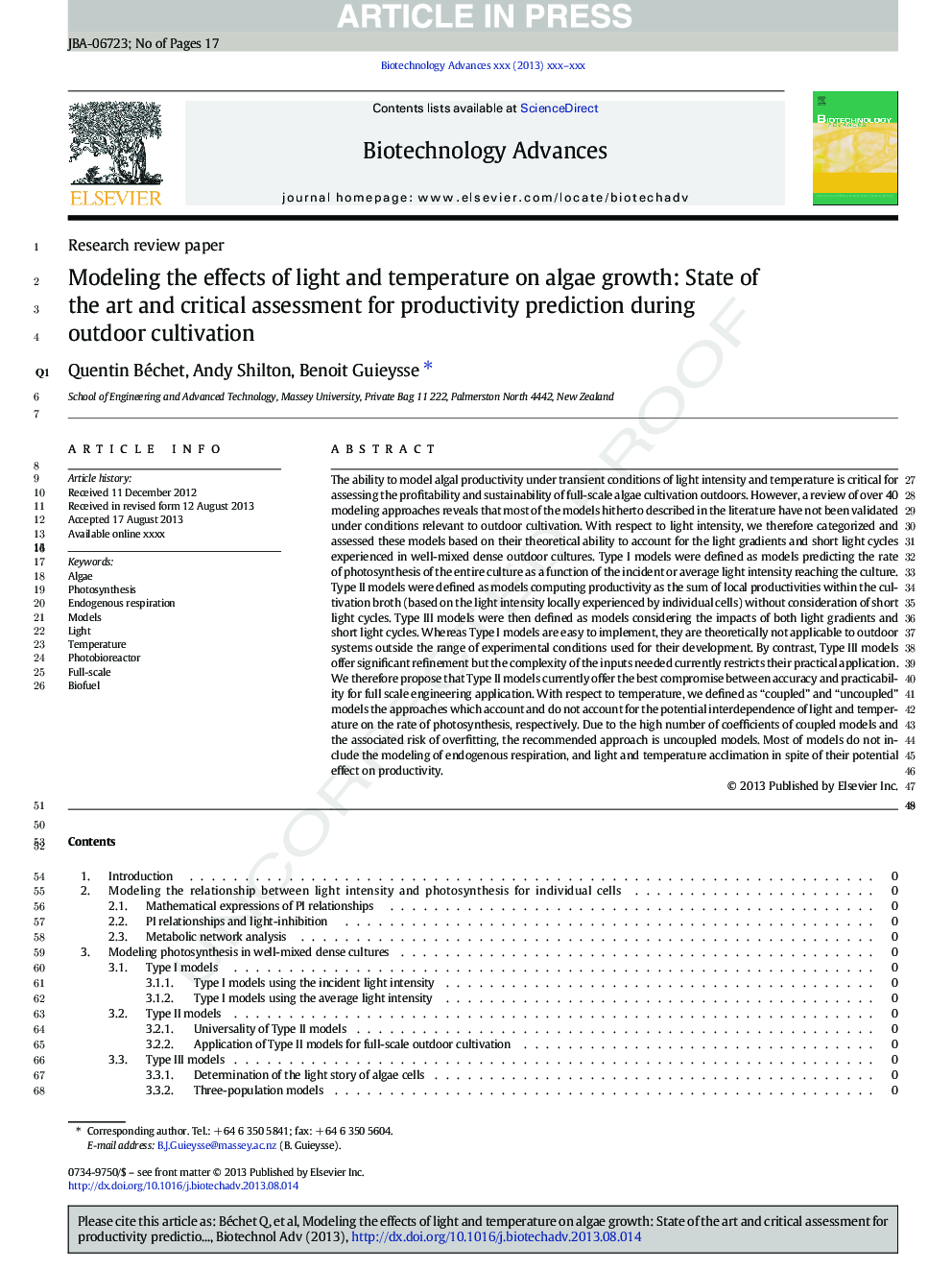| کد مقاله | کد نشریه | سال انتشار | مقاله انگلیسی | نسخه تمام متن |
|---|---|---|---|---|
| 10231585 | 1211 | 2013 | 17 صفحه PDF | دانلود رایگان |
عنوان انگلیسی مقاله ISI
Modeling the effects of light and temperature on algae growth: State of the art and critical assessment for productivity prediction during outdoor cultivation
ترجمه فارسی عنوان
مدل سازی اثرات نور و دما بر رشد جلبک: وضعیت هنر و ارزیابی انتقادی برای پیش بینی میزان بهره وری در حین کشت در فضای باز
دانلود مقاله + سفارش ترجمه
دانلود مقاله ISI انگلیسی
رایگان برای ایرانیان
کلمات کلیدی
موضوعات مرتبط
مهندسی و علوم پایه
مهندسی شیمی
بیو مهندسی (مهندسی زیستی)
چکیده انگلیسی
The ability to model algal productivity under transient conditions of light intensity and temperature is critical for assessing the profitability and sustainability of full-scale algae cultivation outdoors. However, a review of over 40 modeling approaches reveals that most of the models hitherto described in the literature have not been validated under conditions relevant to outdoor cultivation. With respect to light intensity, we therefore categorized and assessed these models based on their theoretical ability to account for the light gradients and short light cycles experienced in well-mixed dense outdoor cultures. Type I models were defined as models predicting the rate of photosynthesis of the entire culture as a function of the incident or average light intensity reaching the culture. Type II models were defined as models computing productivity as the sum of local productivities within the cultivation broth (based on the light intensity locally experienced by individual cells) without consideration of short light cycles. Type III models were then defined as models considering the impacts of both light gradients and short light cycles. Whereas Type I models are easy to implement, they are theoretically not applicable to outdoor systems outside the range of experimental conditions used for their development. By contrast, Type III models offer significant refinement but the complexity of the inputs needed currently restricts their practical application. We therefore propose that Type II models currently offer the best compromise between accuracy and practicability for full scale engineering application. With respect to temperature, we defined as “coupled” and “uncoupled” models the approaches which account and do not account for the potential interdependence of light and temperature on the rate of photosynthesis, respectively. Due to the high number of coefficients of coupled models and the associated risk of overfitting, the recommended approach is uncoupled models. Most of models do not include the modeling of endogenous respiration and the modeling of light and temperature acclimation in spite of their potential effect on productivity.
ناشر
Database: Elsevier - ScienceDirect (ساینس دایرکت)
Journal: Biotechnology Advances - Volume 31, Issue 8, December 2013, Pages 1648-1663
Journal: Biotechnology Advances - Volume 31, Issue 8, December 2013, Pages 1648-1663
نویسندگان
Quentin Béchet, Andy Shilton, Benoit Guieysse,
